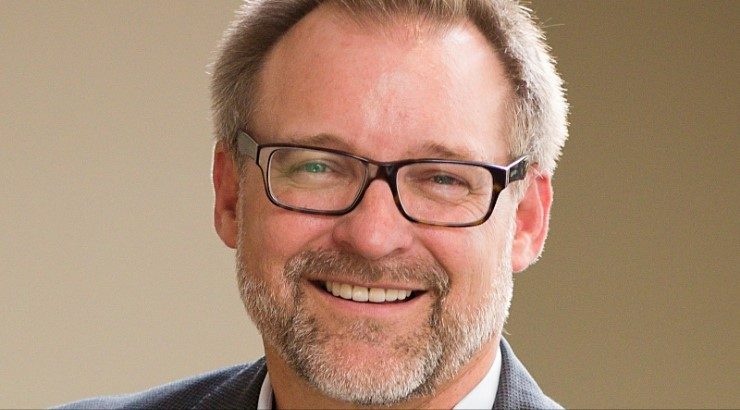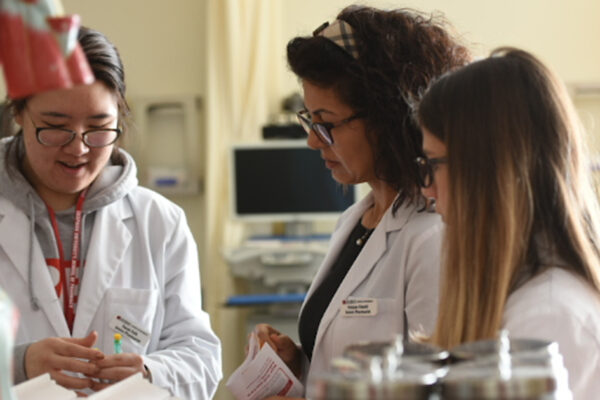As COVID-19 vaccination expands and infections fall, health care professionals are discussing how the pandemic will affect the future of patient care. Among them is Jeff Goad, PharmD., MPH., professor and chair, Department of Pharmacy Practice at Chapman University School of Pharmacy. This Q&A originally appeared in the Orange County Business Journal.
The COVID-19 pandemic has sparked new ways of thinking and approaching long-standing problems. How has the pandemic accelerated some of your initiatives?
Pre-pandemic, medical clinics had just started testing the use of remote audio-video connections to allow their medical specialists and pharmacists to see patients virtually at different locations. These systems were often expensive and required the patient to come to their clinic and sit in a room to see their physician or pharmacist on a computer screen. With the availability of online platforms, pharmacists quickly converted their practices to virtual formats. Patients could remain home and still get their medication therapy management by their pharmacist.
Some services, like immunizations, still need to be done in person, but we learned that many other patient visits could effectively be done virtually, which will likely continue long after this pandemic ends.
What areas of care are going to be critical this year?
Preventative healthcare, such as immunizations and disease screenings, have hit historic lows during the pandemic. Virtual visits and mail-order medications helped keep people safe during the pandemic, but you can’t get your shingles vaccination or lab work done at home. Diabetes and hypertension didn’t disappear, they just aren’t being screened for as often as pre-pandemic.
We are likely to see people later in disease progression rather than earlier when preventable. Ignorance is not bliss. While there wasn’t much influenza around this season, shingles was not affected by people staying away from other people. If we cannot restart our routine adult and pediatric immunizations, we’re likely to see a resurgence of diseases such as measles and mumps.
Should employers require their employees to be vaccinated before returning to the workplace?
In California, we require vaccinations for K-12 students, and adults in higher education. For students, this requirement may bar them from attending school. Employers of healthcare providers, such as hospitals, require influenza vaccination. Adults, unlike students, can sign an active declination of vaccination. So, it’s more complicated to require a vaccination as a condition of employment. During the pandemic, many employers require COVID-19 testing as a condition to return to the workplace. Using the same logic, employers could require vaccination for someone to be in person at the workplace. If, however, that creates a condition of employment, it gets complicated again.
At a minimum, employers should strongly encourage their employees to get vaccinated and provide as many incentives as possible.
How is your organization involved in the local OC community?
Chapman University’s health science programs have been actively involved in COVID-19 vaccination outreach efforts throughout Orange County. As soon as vaccination became available, our faculty and students began volunteering at hospitals and with the pharmacies vaccinating nursing homes.
As vaccine eligibility expanded, we starting volunteering at the County’s mass vaccination sites at Disneyland and the Anaheim Convention Center. We have had over 100 faculty, and students volunteer in the community to give COVID-19 vaccines.
What challenges lie ahead for healthcare providers and systems? And what will the COVID-19 pandemic’s impact be on patient care? How will virtual visits, which surged during the pandemic, affect the practice of medicine? What other trends do you foresee in the next five years?
Early in the pandemic, elective procedures and routine visits were stopped while hospitals filled with patients. While the public may have interpreted that as a financial boon for hospitals, the health systems that own the hospitals rely on elective procedures and clinic visits for revenue. Ironically, while hospitals filled with patients, their budgets were strained to maintain or even grow their workforce.
During future pandemics, health systems must implement facility safety protocols rapidly and switch to billing for virtual visits to allow continuity of care in a fiscally responsible manner. The switch to virtual visits will force health insurers to adequately compensate for a range of online visits. Technology will need to advance quickly to allow seamless at-home monitoring of everything from blood pressure to asthma.




